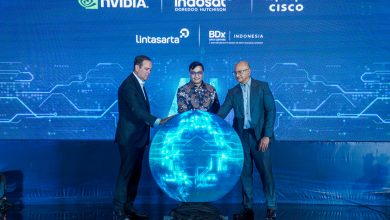Beyond Technical – Trust, the Essential Aspect of Hybrid Work

Attributed to: Ilya Gutlin (Senior Vice President, Alcatel-Lucent Enterprise APAC)

It looks like hybrid work models are here to stay even as more of the workforce return to office these few months with better control of the COVID-19 situation and loosening of restrictions. According to a 2022 survey by PwC, 73% of Singapore employees indicate a high preference for hybrid work over the next 12 months. An IDC study also reported that over 70 percent of workers in Asia Pacific saw higher or similar productivity during flexi-work compared to pre-pandemic times.
For employers making long term plans of operating with a hybrid workforce, enterprise grade equipment and work devices, fast and stable internet connection, and advanced software are all necessary. Nonetheless, equally essential is a trust between management and employees to make this work.
The New Workspace
When the Singapore Government implemented the circuit breaker — or the local version of city lockdown — in 2020, organisations found it difficult to adapt to new, remote settings having to pivot to a distributed workforce quickly. To keep business and operations running, many took to cloud-based services and online communication tools.
Fast forward to today, hybrid work seems to have emerged as a new way forward for many organisations.
In view of this trend, organisations must take hybrid work into consideration as they equip their employees to work to the best of their abilities. In this new digital work environment, services must be available to everyone, everywhere, every time – regardless of device capabilities and network infrastructure.
Additionally, organisations have to ensure that as they adopt newer technologies, that they also keep their network infrastructure up to date. They will need to ensure that their networks are ready for the demands and workloads of the data-centric digital age, and support the integration of 5G, LAN, or other wireless technologies into existing digital ecosystems.
Striking a Balance
Ensuring the right technology is in place is only half the battle as there are still hurdles that can hinder employees’ maximum potential. Accustomed to legacy office practices, management can be slow to trust employees. Employees are equally wary of management and are concerned about hybrid work in the long run.
For instance, management may have concerns around the security of WFH workers gaining access to and handling company assets and data in their course of work. In this new paradigm of work, proprietary information and sensitive data may have to flow beyond the company’s firewalls into the homes of workers.
Comparatively, employees working from home may be concerned about their own privacy amidst the monitoring of data as management struggle to track workforce efficiency, productivity or sometimes safety.
It is easy for this type of doubts and mistrusts amongst management and staff to escalate into something that may be toxic to the work environment.
It is therefore crucial for management and employees to strike a balance and build mutual trust. Organisations must find the right level of control to ensure both optimum productivity and the highest level of security. Instead of tracking worker activities, management may want to maintain agile processes and allow for more open and collaborative environments to empower a greater sense of leadership within the workforce itself. Meanwhile, workers will need to ensure that they follow stringent guidelines when handling company data and information while working from home.
To facilitate an inclusive environment, management must redefine how the team works and communicates, while maintaining a healthy team spirit and workforce across all working arrangements. Communication of business, team, and individual goals are essential and should be kept transparent. With regular check-ins by management, an organization can stay on track and supported, whilst working towards the company’s goals.
This inclusive environment can be achieved with the support of a network infrastructure that can harness IoT data. IoT devices in workplaces optimise workflow and remove limitations that hamper productivity. Employees benefit from a connected workplace that lets them join meetings from anywhere. Cloud-based solutions enable teams to collaborate whether on-site or remote, streamlining interaction and fostering team trust. Businesses are also better able to make informed workplace decisions on using their workspace optimally and efficiently to reduce operation costs.
However, as hybrid work becomes the norm in modern workplaces, robust technology is not enough for a healthy workforce. Employee autonomy is essential to productivity, and management must develop a trust in their employees – and ensure this trust is returned in full. In this new world, organisations must change the way they operate.
Trust is Key
Be it remote, hybrid, or on-premise work, trust is the integral foundation of a successful and happy workplace. Trust has emerged as an area of contention between employees and employers, with the lack thereof one of the main reasons some employers have instituted return-to-office even when there were return to office restrictions during the height of the pandemic.
However, this mindset has exposed employers to potential consequences such as fines or the risk of a workplace outbreak. Singaporeans, on the other hand, are enjoying the newfound freedom of flexible work arrangements.
Organisations cannot avoid accepting this new normal of work. Instead, they should extend support – beyond technical means – to encourage and promote hybrid work for better work-life balance, and a more transparent conversation between employees and management.




